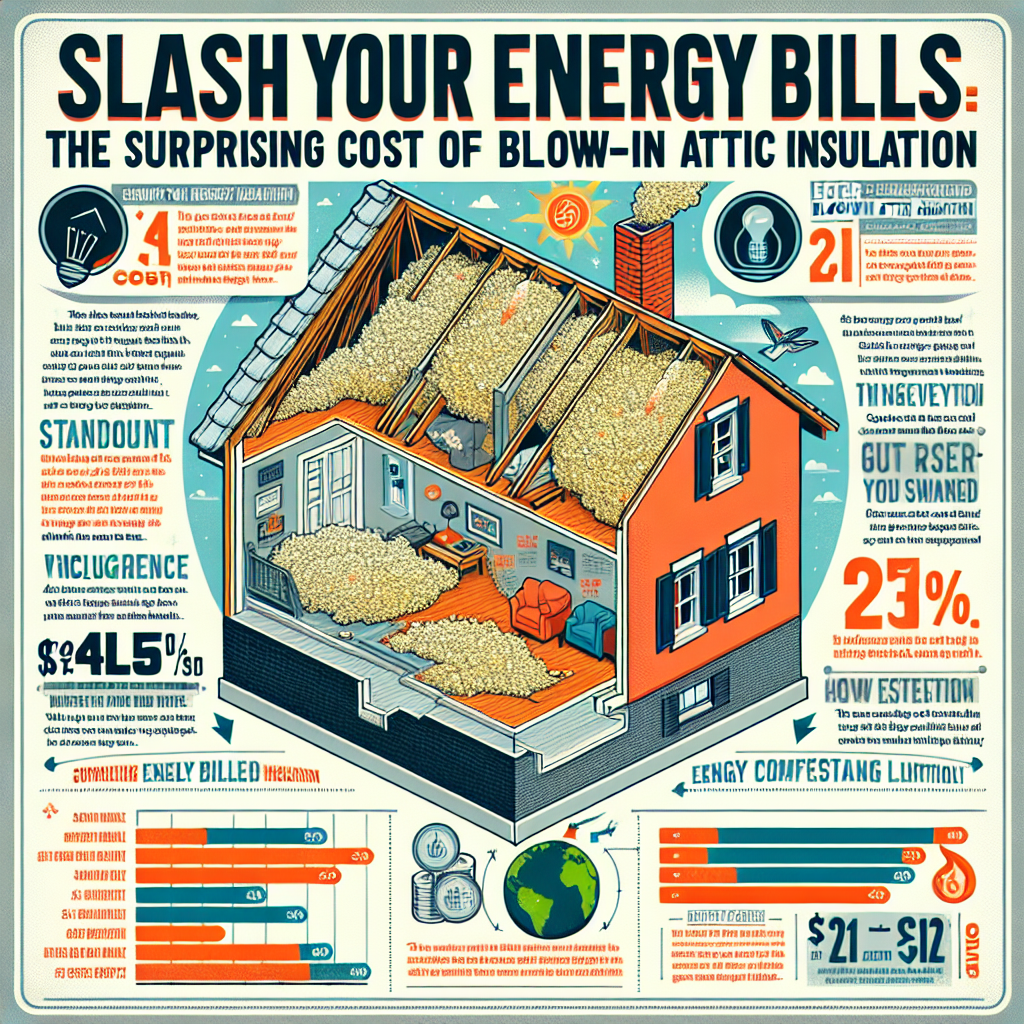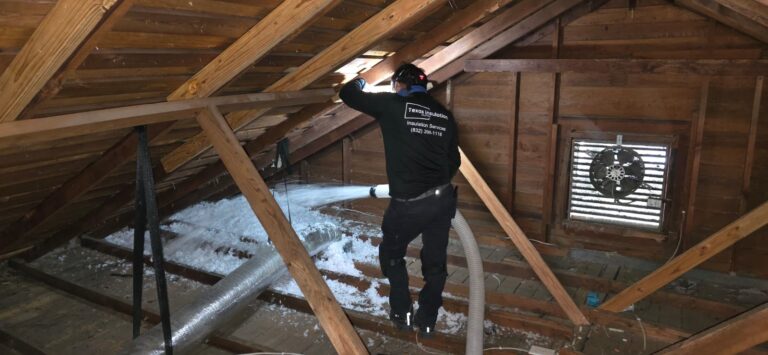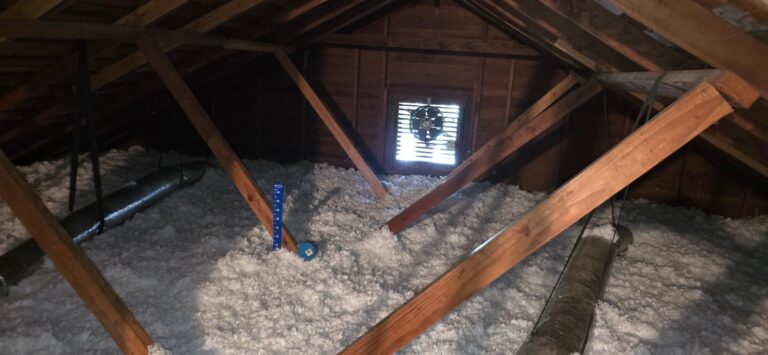-
Table of Contents
“Efficiently insulate your space with spray foam and blown in insulation – keeping you comfortable and saving you money.”
Introduction
Spray foam and blown in insulation are two popular methods of insulating homes and buildings. Both options provide effective thermal insulation, helping to keep indoor spaces warm in the winter and cool in the summer. However, they differ in terms of application and materials used. In this introduction, we will explore the basics of spray foam and blown in insulation, their benefits, and how they can improve the energy efficiency and comfort of a building.
The Average Cost of Blown-In Insulation for Attics: What to Expect
When it comes to insulating your home, there are many options available. Two popular choices are spray foam and blown-in insulation. While both have their benefits, blown-in insulation is often the preferred choice for attics due to its cost-effectiveness and ease of installation. In this article, we will discuss the average cost of blown-in insulation for attics and what you can expect when considering this option for your home.
First, let’s define what blown-in insulation is. This type of insulation is made up of loose fibers or particles that are blown into the desired space using a special machine. These fibers can be made of various materials such as fiberglass, cellulose, or mineral wool. The insulation is then spread evenly throughout the attic, creating a barrier that helps to keep the heat in during the winter and out during the summer.
So, what can you expect to pay for blown-in insulation in your attic? The cost can vary depending on several factors, including the size of your attic, the type of insulation used, and the labor costs in your area. On average, homeowners can expect to pay between $1,500 and $2,500 for blown-in insulation in their attics. This cost may seem high, but it is important to remember that insulation is an investment that can save you money in the long run.
One of the main benefits of blown-in insulation is its cost-effectiveness. Unlike other types of insulation, such as spray foam, blown-in insulation is relatively inexpensive. This is because the materials used are less expensive, and the installation process is quicker and requires less labor. Additionally, blown-in insulation can be installed over existing insulation, making it a more affordable option for homeowners looking to upgrade their attic insulation.
Another factor that can affect the cost of blown-in insulation is the type of material used. Fiberglass is the most common type of blown-in insulation and is typically the least expensive option. Cellulose, on the other hand, is slightly more expensive but offers better insulation properties. Mineral wool is the most expensive option, but it is also the most effective at reducing noise and providing fire resistance. It is important to discuss the different material options with your contractor to determine which one is best for your home and budget.
Labor costs can also play a significant role in the overall cost of blown-in insulation. The installation process for blown-in insulation is relatively quick and can be completed in just a few hours. However, the cost of labor can vary depending on the contractor you choose and the complexity of your attic space. It is always a good idea to get quotes from multiple contractors to ensure you are getting a fair price.
In addition to the cost of materials and labor, there may be additional costs associated with blown-in insulation. For example, if your attic has any obstructions, such as pipes or ductwork, these will need to be properly sealed before the insulation can be installed. This may require additional materials and labor, which can increase the overall cost.
In conclusion, the average cost of blown-in insulation for attics can range from $1,500 to $2,500. This cost may vary depending on factors such as the size of your attic, the type of insulation used, and labor costs in your area. While this may seem like a significant investment, blown-in insulation is a cost-effective option that can save you money on your energy bills in the long run. It is important to do your research and get quotes from multiple contractors to ensure you are getting the best price for your blown-in insulation project.
Spray Foam vs. Blown-In Insulation: Which is More Cost-Effective for Attics?

When it comes to insulating your attic, there are two main options to consider: spray foam and blown-in insulation. Both of these methods have their own benefits and drawbacks, but one of the most important factors to consider is cost-effectiveness. In this article, we will explore the differences between spray foam and blown-in insulation and determine which one is more cost-effective for attics.
Spray foam insulation is a popular choice for many homeowners due to its ability to create an airtight seal and provide excellent insulation. It is made up of two components, polyurethane and isocyanate, which are mixed together and sprayed onto the desired surface. As the foam expands, it fills in any gaps and creates a barrier against air and moisture. This type of insulation is known for its high R-value, which measures the material’s ability to resist heat flow. The higher the R-value, the more effective the insulation is at keeping your home warm in the winter and cool in the summer.
On the other hand, blown-in insulation, also known as loose-fill insulation, is made up of small particles of materials such as fiberglass, cellulose, or mineral wool. These particles are blown into the attic using a special machine, filling in any gaps and creating a layer of insulation. Blown-in insulation is known for its ability to conform to any space, making it a great option for attics with irregular shapes or hard-to-reach areas. It also has a high R-value, making it an effective choice for insulation.
When it comes to cost, blown-in insulation is generally the more affordable option. The materials used for blown-in insulation are less expensive than spray foam, and the installation process is also less labor-intensive. This makes it a more budget-friendly choice for homeowners looking to insulate their attics. Additionally, blown-in insulation can be installed quickly and easily, which can save on labor costs.
On the other hand, spray foam insulation tends to be more expensive due to the materials and labor involved. The two components used for spray foam insulation must be mixed on-site, and the installation process requires special equipment and trained professionals. This can drive up the cost significantly, making it a less cost-effective option for attics.
However, it is important to consider the long-term cost savings when comparing spray foam and blown-in insulation. Spray foam insulation has a longer lifespan and can last up to 80 years, while blown-in insulation may need to be replaced every 20-30 years. This means that while the initial cost of spray foam insulation may be higher, it can save you money in the long run by not needing to be replaced as frequently.
Another factor to consider is energy efficiency. Spray foam insulation’s airtight seal can greatly reduce air leakage, which can account for up to 40% of a home’s energy loss. This means that with spray foam insulation, you may see a decrease in your energy bills, making it a more cost-effective option in the long run.
In conclusion, while blown-in insulation may be the more affordable option upfront, spray foam insulation may be more cost-effective in the long run due to its longer lifespan and energy-saving benefits. It is important to consider your budget and long-term goals when deciding between these two types of insulation for your attic. Consulting with a professional insulation contractor can also help you determine the best option for your specific needs and budget. Ultimately, both spray foam and blown-in insulation are effective choices for insulating your attic, and the decision will depend on your individual circumstances.
Maximizing Energy Efficiency: How Spray Foam and Blown-In Insulation Can Save You Money in the Long Run
In today’s world, energy efficiency has become a top priority for homeowners. Not only does it help reduce our carbon footprint, but it also saves us money in the long run. One of the most effective ways to maximize energy efficiency in our homes is through proper insulation. While there are various types of insulation available, two popular options are spray foam and blown-in insulation. In this article, we will explore the benefits of these two types of insulation and how they can save you money in the long run.
Spray foam insulation is a type of insulation that is applied as a liquid and then expands to fill the space. It is made of polyurethane and is known for its high R-value, which measures the insulation’s ability to resist heat flow. This means that spray foam insulation is highly effective in keeping your home warm in the winter and cool in the summer. It also has the added benefit of sealing any air leaks, making it a great option for energy efficiency.
One of the main advantages of spray foam insulation is its ability to conform to any space. This means that it can be applied to irregularly shaped areas, such as around pipes and wires, ensuring that every nook and cranny is properly insulated. This is especially beneficial for older homes that may have gaps and cracks in the walls and attic. By sealing these areas, spray foam insulation can significantly reduce your energy bills by preventing air from escaping.
Another advantage of spray foam insulation is its durability. Unlike other types of insulation, it does not settle or compress over time, meaning it will maintain its effectiveness for years to come. This also means that you will not have to replace or add more insulation in the future, saving you money in the long run. Additionally, spray foam insulation is resistant to mold and pests, making it a healthier and more cost-effective option for your home.
On the other hand, blown-in insulation, also known as loose-fill insulation, is made of small particles of materials such as fiberglass, cellulose, or mineral wool. It is installed by blowing the insulation into the desired space, filling it up evenly. Blown-in insulation is known for its high R-value and its ability to cover large areas quickly and efficiently. This makes it a popular choice for attics and walls.
One of the main benefits of blown-in insulation is its cost-effectiveness. It is generally less expensive than other types of insulation, making it a great option for those on a budget. Additionally, its installation process is quick and easy, which can save you money on labor costs. However, it is important to note that blown-in insulation may require a professional installation, as it requires special equipment to blow the insulation into the desired space.
Another advantage of blown-in insulation is its ability to reduce noise. The small particles of insulation create a dense layer that can absorb sound, making it a great option for homes located in noisy areas. This can also be beneficial for those who work from home or have young children who need a quiet environment for napping.
In conclusion, both spray foam and blown-in insulation are excellent options for maximizing energy efficiency in your home. While spray foam insulation may be more expensive upfront, its durability and effectiveness make it a cost-effective choice in the long run. On the other hand, blown-in insulation is a budget-friendly option that can also provide noise reduction benefits. Whichever option you choose, investing in proper insulation will not only save you money but also contribute to a more sustainable future.
Q&A
Q: What is spray foam insulation?
A: Spray foam insulation is a type of insulation material that is applied using a spray gun. It expands and hardens to create an airtight seal, providing excellent insulation for buildings.
Q: How does spray foam insulation compare to traditional insulation materials?
A: Spray foam insulation has a higher R-value (measure of insulation effectiveness) than traditional materials like fiberglass or cellulose. It also provides better air sealing, reducing energy loss and improving indoor air quality.
Q: What is blown in insulation?
A: Blown in insulation, also known as loose-fill insulation, is a type of insulation that is blown into attics, walls, or other spaces using a special machine. It is typically made of fiberglass, cellulose, or mineral wool and provides good coverage and insulation.
Conclusion
In conclusion, both spray foam and blown in insulation are effective options for insulating homes and buildings. Spray foam offers a higher R-value and better air sealing capabilities, while blown in insulation is more cost-effective and easier to install in existing structures. Ultimately, the best choice will depend on the specific needs and budget of the project. It is important to consult with a professional to determine the most suitable insulation option for your specific situation.






